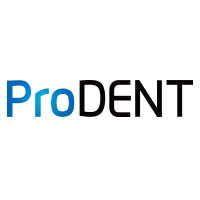Intraoral Cameras,The Most Commonly Used Tools By Dental Professionals Posted on 8 Jun 09:00 , 0 comments
The most commonly used tools by dental professionals for clinical documentation, intraoral cameras have almost completely replaced the use of film for operatory photography. Zoom capacity rivals that of conventional microscopes, and most of these portable, wand-shaped cameras are digital, providing exceptional visibility for diagnosis, treatment planning and monitoring over time. Instantly captured high-definition images enhance patient compliance and education by allowing patients to see what the clinician sees. Some intraoral cameras also can capture extraoral images, such as those needed for patient records.
In a nutshell, an intraoral camera is a small video camera that takes an X-ray of the outside of the gum or tooth. The intraoral camera resembles an oversized pen and although usage varies depending on the model-type, this image-taking device is typically outfitted with a disposable protective sheath for each new patient. While simultaneously viewing a monitor, the dentist inserts the camera into a patient's mouth and gently shifts it about so that images can be taken from a variety of angles.
First used in the early 1990s, the intraoral camera is still a relatively new piece of dental equipment. Not so long ago, only a handful within the dental community used this tiny camera to take pictures of the teeth and gums. Today, use of the intraoral camera is widespread. For those dentists who do use this device, the intraoral camera has been, and continues to be, extremely handy both in diagnosing dental conditions such as tooth decay and cracked teeth and in educating you, the patient.
Show and Tell
It's not difficult to understand why many patients have misgivings about dental diagnoses that aren't accompanied by pain or any visual cues that the naked eye can see. Since the intraoral camera is used in tandem with a computer screen or television monitor, your dentist can easily show you, in real-time, if you have a fractured tooth need gum disease treatment. In the case of the intraoral camera, a picture may be worth more than a thousand words!
The intraoral camera is especially useful during dental restoration procedures. For example, if you were to have an amalgam tooth filling replaced with a composite resin filling, your dentist could use the intraoral camera to take "before and after" pictures and display the results simultaneously for you to see!
In addition to being a great diagnostic tool, the intraoral camera is a fantastic educational aid. Instead of merely explaining to you what's happening inside your mouth, your dentist can actually show you. And, unlike conventional X-ray images that require processing time, there is no development time associated with intraoral cameras: The immediately available images that this tool renders can be a great time-saver for both you and your dentist.
Saves Time and Trees
Time-savings that come with the intraoral camera are especially noticeable when your dentist needs to take several X-rays at one time. Intraoral camera images are easy to re-take, print and duplicate. Printouts can be sent to dental insurance companies to strengthen claims, a benefit shared by you and your dentist. In fact, these images are so useful that some insurance companies now accept images via e-mail; the reduced paper trail cuts down on claim-processing time and is an environmentally friendly option as well.
